Varicose veins — not just an aesthetic problem. This is a serious threat to the health and even life. At the first sign of the disease is necessary to go to the doctor and start treatment.
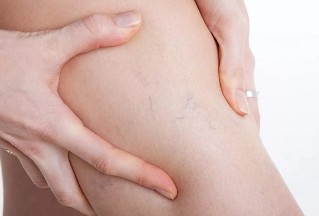
Let's see what are the options of treatment can medicine offer.
A modern approach to the treatment of varicose veins
It is difficult to underestimate the incidence of this pathology, because according to statistics it affects about 75% of women and 60% men. And not only among the inhabitants of developed countries. In order to explain the cause of developing varicose veins, you must have an idea about the house veins of the lower extremities. The deoxygenated blood inside our feet, relentlessly moves upward, to overcome the laws of gravity, — for the implementation of this process, veins are equipped with special valves that prevent the fluid drop down in the breaks between shocks the heart. Violation of the functioning of this mechanism induces a reverse flow of venous blood, due to its greater amount of the veins dilate, decreases their tone.
The first phase of varicose veins usually occurs without special symptoms, accompanied by is less discomfort in the foot area and "weight" to the evening. You may notice that your feet get tired even after a little hiking. The second sub-compensation stage of these symptoms worsen, and also is manifested by gnawing pain, swelling, tingling in legs, cramps.
Third, de-reimbursement system, the phase is characterized by irreversible changes of the skin of the lower limb:
- edema, which are fully do not enter even after sleep;
- hyperpigmentation;
- indurate — protruding seal skin.
When this skin cover becomes easily vulnerable, it is possible to varicose eczema and as the finale of venous disorders, ulcer. Ignoring the pathology are also at risk of such complications, such as thrombophlebitis and thromboembolism.
The sooner treatment begins, the more soothing it will show the weather. But, having achieved success is the need to adjust lifestyle, so the time for preventive procedures.
Suspected varicose veins should be a reason for a rapid visit to the doctor, which helps you detect the disease and determine its stage.
Diagnostics — the first step to recovery
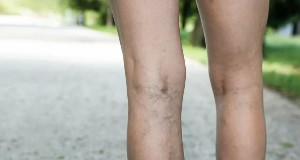
Primarily a specialist survey of the patient — it is necessary for the collection of medical history. Followed standard examination and palpation of the affected disease areas. For more details and accurate diagnosis applying ultrasonic duplex angio-scan with color mapping of blood flow. The procedure looks like a simple ULTRASOUND — the only difference is that, unlike two-dimensional images the doctor sees the speed and direction of movement of the mapping of blood flow in the blood vessels. Modern ULTRASOUND devices allow to exactly define the inoperative valves, the part of the vein with the morbid direction of movement of the blood, accurately identify their projections on the skin.
As soon as the diagnosis is refined, it's time to start taking measures to get rid of varicose veins.
Conservative treatment of varicose veins
With the help of non-surgical methods can prevent, slow or mitigate the course of the disease. As the primary method of treatment is only used in that case, if the operation cannot be performed.
To conservative methods include:
- Compression therapy, this means the use of a special compression underwear or elastic bandages. Their impact narrows the veins, thereby facilitating the work of the valves and improves blood flow. The effectiveness of compression therapy demonstrated by many studies. There are contraindications — among them atherosclerosis, aortoarteritis, inflammatory skin diseases and more.
- Medical therapy involves the use of drugs for both oral, as well as for local application (in the form of ointments). To a group of medicines for the treatment of varicose veins veins on the legs include venotonic and anti-anti-inflammatory agents, anticoagulants (blood thinners). Needed medication that the doctor prescribes individually. It is important to remember that everyone has contraindications. For example, most of the preformed venotonic can not be taken at the beginning of the pregnancy and while breastfeeding. And when taking anticoagulants is necessary to regularly donate to the analysis on blood coagulation.
As the primary treatment in the absence of any obstacles and contraindications to allocate one of the options of surgical treatment.
Traditional operations (venectomy)
Currently it is used only in certain cases, relating to a special structure of the vein, or complicated in the course of the disease, for example, when different forms of acute thrombophlebitis.
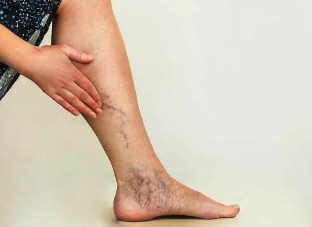
The procedure consists in tying the place of falling of the tribe affected the subcutaneous veins in the deep system (crossectomy) and subsequently mechanical removal alone the trunk. Manipulation is performed under general anesthesia or with spinal anesthesia and takes 1-2 hours. In connection with a high frequency of postoperative complications — hematomas in places of removal of the trunk, a long pain syndrome, skin neuralgia, and paraesthesia (numbness) — recently, the traditional surgical intervention is giving way to modern techniques. These include endo-venous laser coagulation.
After the surgery is recommend regular physical activity without significant load, in the course of one-one and a half months is shown compression therapy.
In addition to this method of treatment, there are other, more "gentle" ways to get rid of varicose veins on the legs.
Minimally invasive methods
There are several different varieties of less traumatic methods of treatment of varicose veins. On the basis of the patient data and the specifics of the disease, the treating physician will decide whether the holding of one of the treatments.
Endo-venous laser coagulation
Operation endo-venous laser coagulation has become a method of treatment of varicose disease regardless of the severity. Neither the severity of the venous insufficiency, or the thickness of the lumen of venous trunk at the present time are not constraints for endo-venous laser coagulation. This was possible thanks to the use of the following tools:
- two-wave lasers with an absorption of one wave is largely absorbed mainly by hemoglobin, and the second — vascular wall;
- radial light repair manuals, which ensures the processing around the circumference of the entire inner surface of the vein;
- automatic pump, which allows you to draw to a solution of the anesthetic around vienna, providing analgesia, reducing the diameter of the vein, the protection of adjacent tissues.
Special training to the endo-venous laser coagulation is not required. Before the operation necessarily performed ultrasound duplex scanning. It is also necessary to administration of blood tests for the standard preoperative preparation of the analysis: overall, biochemical, coagulogram.
During the procedure the doctor puncture the affected vein, after which a thin (1 mm thickness) catheter with a fiber. This whole process, but also the position of the optical waveguide in vienna, and another "cooking" of the veins is controlled by intraoperative BONDAGE-device. The operation takes about 40 minutes and requires only local anesthesia.
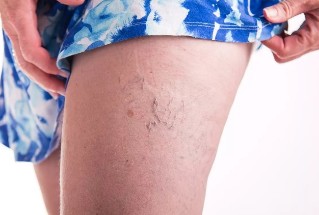
After the surgery, hospital stay is not required, the patient is necessary to wear compression underwear for a period of 3-5 days, and within a few weeks, recommend a daily quiet walk.
Radiofrequency ablation
The operation is basically similar to laser coagulation. The only difference is that on the walls of the veins to his "closure" and the subsequent suction of the operating radio frequency radiation. Special training, in addition to the standard pre-op, it is not necessary.
At the present time in connection with the improvement of laser systems no advantages over the endo-venous laser coagulation radiofrequency ablation does not have. However, the procedure is more than expensive in the context of the higher price of the waveguides.
Operation cannot be performed in the period of pregnancy and lactation, while atherosclerosis of the arteries of the lower extremities and the impossibility of subsequent physical activity.
Possible complications and comprehensive corrective measures in a rehabilitation period similar as in the previous procedure.
Mini-phlebectomy
The principle of operation consists in the removal of the tributaries, and the knots of vienna through the punctures or incisions on the skin using special tools. It is used in an isolated varicose vein tributaries or as an additional procedure after laser coagulation, radiofrequency ablation or surgical phlebectomy.
Preparation is similar to the previous procedures — the standard set of tests as well as ultrasound examination of the veins. Contraindications — pregnancy and breast-feeding, acute infectious disease, thrombophlebitis, disturbance of motor activity, pathology of blood clotting.
The length of the mini-phlebectomy is 20-40 minutes, in the period of rehabilitation is necessary to wear compression stockings.
Sclerotherapy
Non-invasive method of treating varicose veins is suitable for both advanced varicose veins, as well as in the aesthetic purposes — for the destruction of vascular "stars" and "veins".
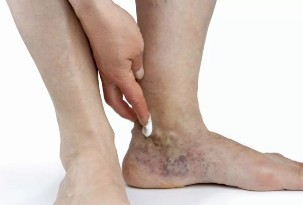
Contraindications serve thrombophlebitis, individual allergic reactions, infection, pregnancy and lactation, the inability to perform accurate injections.
Sclerotherapy consists in the introduction into the vein through the puncture of a special substance that "holds together" the walls of the container, to subsequently become his resorption. One of the most recent innovation — a method of foam-foam, which includes the use of foam forms of the drug. It in lesser extent, leached of blood, so it is possible, reduce the concentration and amount of the substance in increasing efficiency. Operations are carried out without anesthesia, because the puncture is necessary only fine insulin needle.
To undesirable effects of sclerotherapy can be attributed to the pigmentation, which appears on the go sklerozirovanie vienna. In some cases it is possible to incomplete bonding of the veins, which require repeated procedures.
After sclerotherapy, it is necessary to wear compression underwear, and avoid physical exertion and high temperatures (for example, when visiting the sauna).
The price of sclerotherapy depends on the carried volume. For the removal of larger varicose suitcases sclerotherapy today practically not used. And the session sclerotherapy of small knots or inflammation of the networks will cost from 7000 to 20 000 czk.
With the development of medicine to fight with varicose veins on the legs, moved from the category of "one hundred years of war" into the category of "quick wins". Sophisticated surgical methods has subsided minimally invasive procedures, more safe and effective. Today varicose veins — it's not a punishment, but just an excuse, consult an expert.























